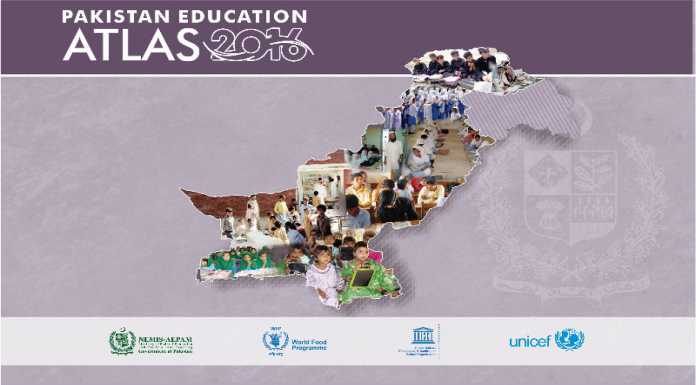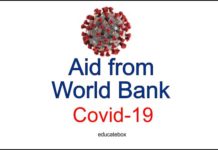…
Pakistan Education Atlas – 5th Edition

5th Edition Released of Pakistan Education Atlas
A new edition, the 5th edition, of the Pakistan Education Atlas has been released. This was a joint effort between the Ministry of Federal Education and Professional Training and the UN World Food Program (WFP). An official with the Ministry of Federal Education and Professional Training spoke about the good this new edition will do for the nation. In his speech, Haseeb Athar spoke about how the new atlas would enable all aspects of government to make better decisions with regard to policies and programs for education. No other document like the Pakistan Education Atlas exists in Pakistan and it allows experts in education to look at the specifics of different geographical areas in the country and see what resources and programs would be best suited for them.
The director of the World Food Program in Pakistan spoke about the connection between education and being able to provide food for families. She said that families with more education are better off financially so they can afford food and also better able to choose foods that will have the most health benefits for the family. WFP offers educational support for school lunch programs and supports the plans of the Pakistan government fully. The WFP agrees that the Atlas will improve the educational programs and the overall well being of the citizens of Pakistan, especially young children who are the future of the country.
The Pakistan Education Atlas will not only help the government plan their programs better but also measure how the country is progressing towards its SDG (Sustainable Development Goal). The purpose of the SDG is to make sure that all citizens of Pakistan have access to the same quality of educational programs and higher education no matter where they reside. The WFP and the government of Pakistan believe they can accomplish their goal by the year 2030.
The biggest struggle with education in Pakistan is getting all the children enrolled in schools. Right now, a little over 50% of children are enrolled in school and that number has increased by less than 1% since 2010. More students are registered for lower levels of education. About 72% of children are registered at primary education facilities which means more than 6.5 million children between 5 and 9 years old do not attend school. This is an improvement from the 2013 numbers which were 6.2 million. Of that 6 million, 2.5 million are male and 3.5 million are female. Almost half of the students enrolled are from Punjab which is the province with the largest population.
Of all the students registered for primary school, 30% of the males are no longer in school by Grade 5. Part of the problem with student retention is that less than 70% of Pakistan’s schools provide drinking water and indoor plumbing for lavatories. Less than 60% of the facilities have electricity and 30% of them do not have any walls to protect the educational facilities. Students are a lot less likely to stay in school when the facilities are lacking in these kinds of necessities.
The World Food Program and the Ministry of Federal Education and Training have been collaborating on the 5th Edition of the Pakistan Education Atlas for the last 6 years. During this time, the UN Joint Program of Work, the UN Children’s Fund (UNICEF) and UNESCO (United Nationals Educational, Scientific and Cultural Organization worked with the WFP and the Ministry to ensure that the information in the atlas was as accurate as possible. The report is available online for those who are interested.




 EducateBox is your education news, past papers, model papers, interesting articles website. We provide you with the latest breaking news straight from the education industry. We are your all-access pass to all the A-List tutorials around the globe.
EducateBox is your education news, past papers, model papers, interesting articles website. We provide you with the latest breaking news straight from the education industry. We are your all-access pass to all the A-List tutorials around the globe.
I was looking for Pakistan Education Atlas. Thank you very much for the area.
Quite! This was a really wonderful post. Thank you for your provided advice